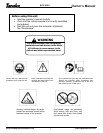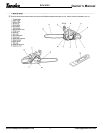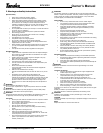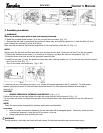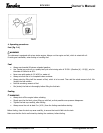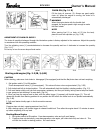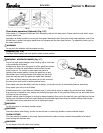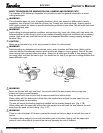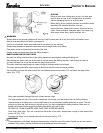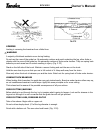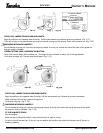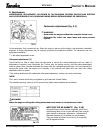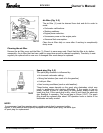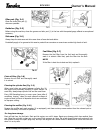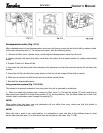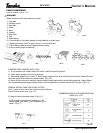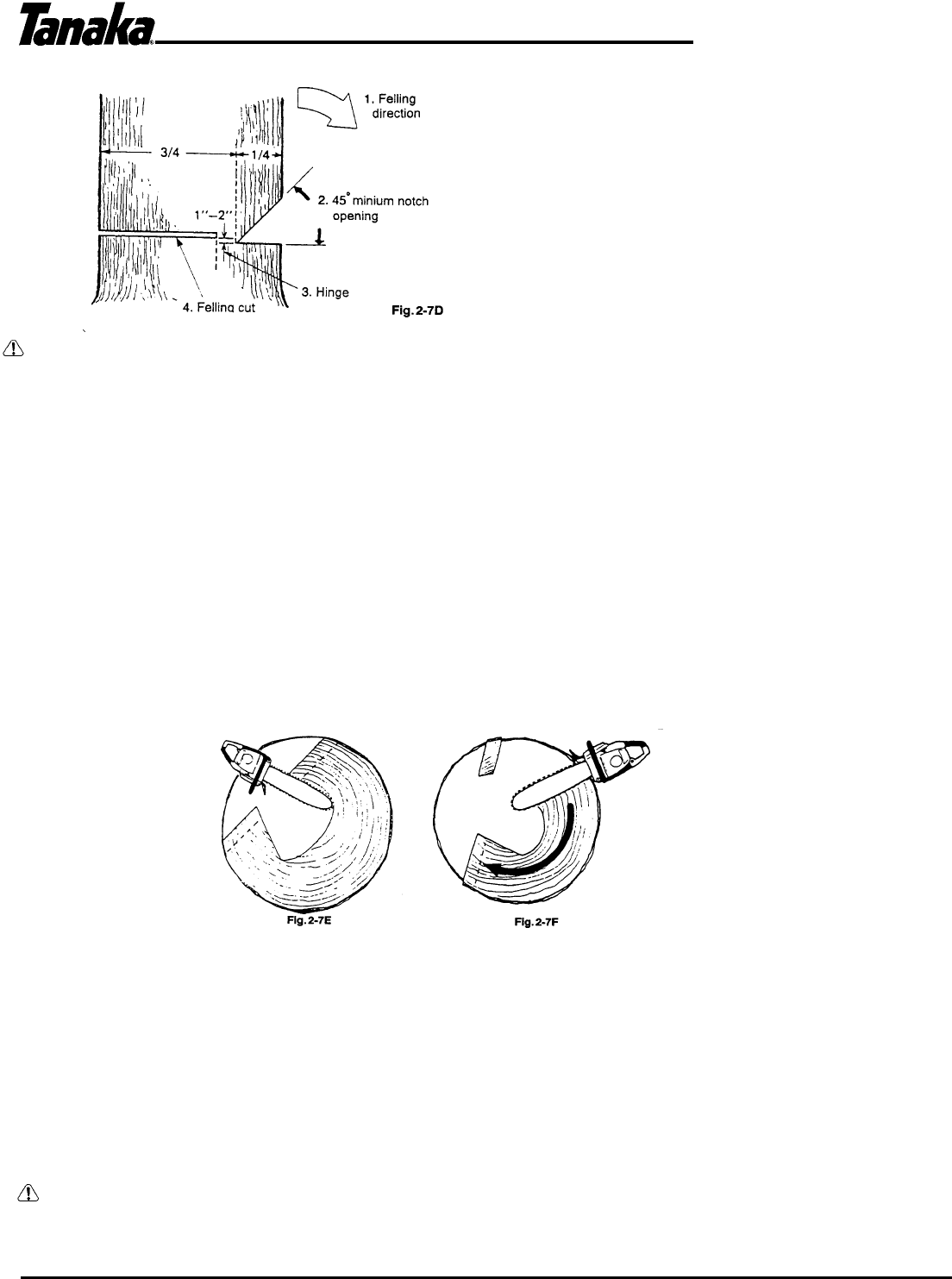
www.tanakapowerequipment.com 9 custsvc@tanaka-ism.com
Owner’s Manual
ECV-4501
WARNING!
Always observe the general conditions of the tree. Look for decay and rot in the trunk which will make it more
likely to snap and start to fall before you expect it.
Look for dry branches, which may break and hit you when you are working.
Always keep animals and people at least twice the tree length away while felling.
Clear away shrubs and branches from around the tree.
Prepare a path of retreat away from the felling direction.
BASIC RULES FOR FELLING TREES
Normally the felling consists of two main cutting operations-notching and making the felling cut.
Start making the upper notch cut on the side of the tree facing the feeling direction. Look through the kerf as
you saw the lower cut so you do not saw too deep into the trunk.
The notch should be deep enough to create a hinge of sufficient width and strength.
The notch opening should be wide enough to direct the fall of the tree as long as possible.
Saw the felling cut from the other side of the tree between one and two inches (3-5 cm) above the edge of the
notch. (Fig. 2-7D)
Never saw completely through the trunk. Always leave a hinge.
The hinge guides the tree. If the trunk is completely cut through, you lose control over the felling direction.
Insert a wedge or a felling lever in the cut well before the tree becomes unstable and starts to move. This will
prevent the guide bar from binding in the felling cut if you have misjudged the falling direction. Make sure no
people have come into the range of the falling tree before you push it over.
FELLING CUT, TRUNK DIAMETER MORE THAN TWICE GUIDE BAR LENGTH
Cut a large, wide notch. Then cut a recess into the center of the notch. Always leave a hinge on both sides of the
center cut. (Fig. 2-7E)
Complete the felling cut by sawing around the trunk as in the Fig. 2-7F.
WARNING!
These methods are extremely dangerous because they involve the use of the nose of guide bar and can result in
kickback. Only properly trained professionals should attempt these techniques.
FELLING
Felling is more than cutting down a tree. You must also
bring it down as near to an intended place as possible
without damaging the tree or anything else.
Before felling a tree, carefully consider all conditions which
may effect the intended direction, such as:
Angle of the tree. Shape of the crown. Snow load on the
crown. Wind conditions. Obstacles within tree range (e.g.,
other trees, power lines, roads, buildings, etc.).



